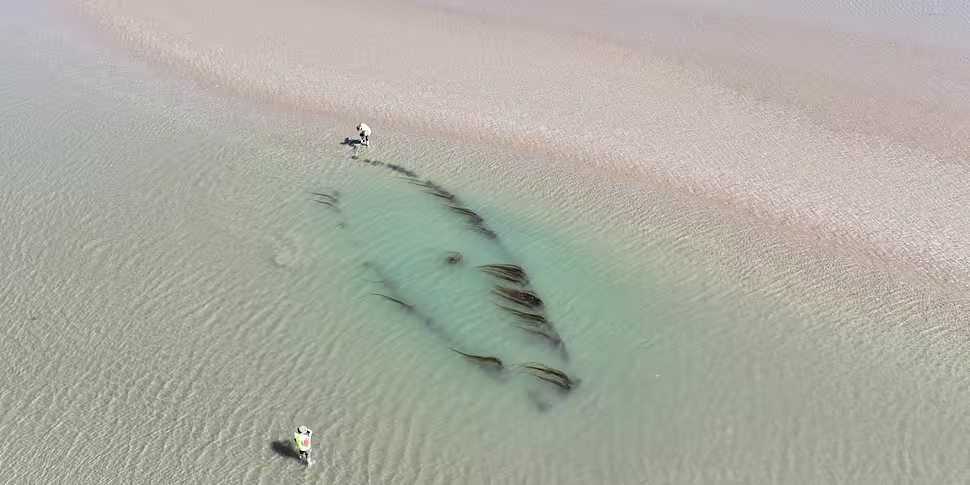Archaeologists believe they may have identified two shipwrecks uncovered on a Dublin beach.
The remains of three vessels at Portmarnock Strand are believed to date back as far as the 19th century.
They were discovered while a team from the National Monuments Service (NMS) were trying to find another known shipwreck nearby back in July.
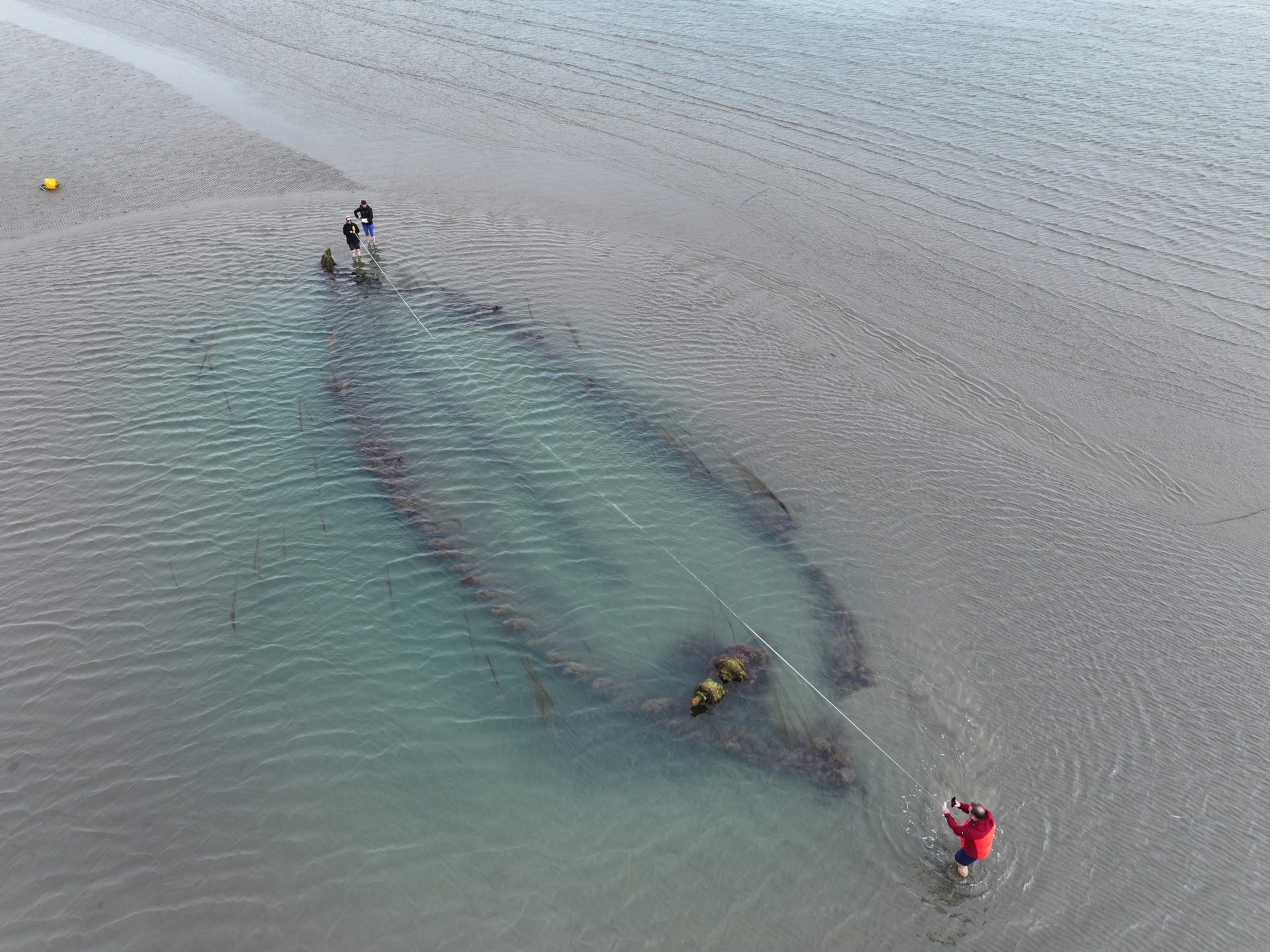 One of the shipwrecks on Dublin's Portmarnock Beach. Image: National Monuments Service
One of the shipwrecks on Dublin's Portmarnock Beach. Image: National Monuments ServiceThe cyclical nature of sand movement on beaches often leads to the temporary exposure and subsequent reburial of shipwrecks.
National Monuments Service senior archaeologist Karl Brady told Moncrieff they came across these wrecks while looking for something else.
"We have 13 shipwrecks recorded for the whole beach but during the summer we got a report from a local diver and he came across this wreck that was fully uncovered," he said.
"Whilst we knew it was there we'd never seen it uncovered before so we went out to investigate it.
"It just so happens we couldn't find it on the day but we came across three new wrecks that we hadn't seen before".
Mr Brady said the sand can almost act like a "vacuum seal" on the ships.
"With all beaches around the coast the sand is constantly moving [and] the wind blows it up on the beach and then offshore," he said.
"Storms can aggravate the sand and can move it quite quickly.
"Once a wreck gets buried in the sand it's actually preserved quite well.
"That's why some our shipwrecks around the country date back many hundreds of years and even older".
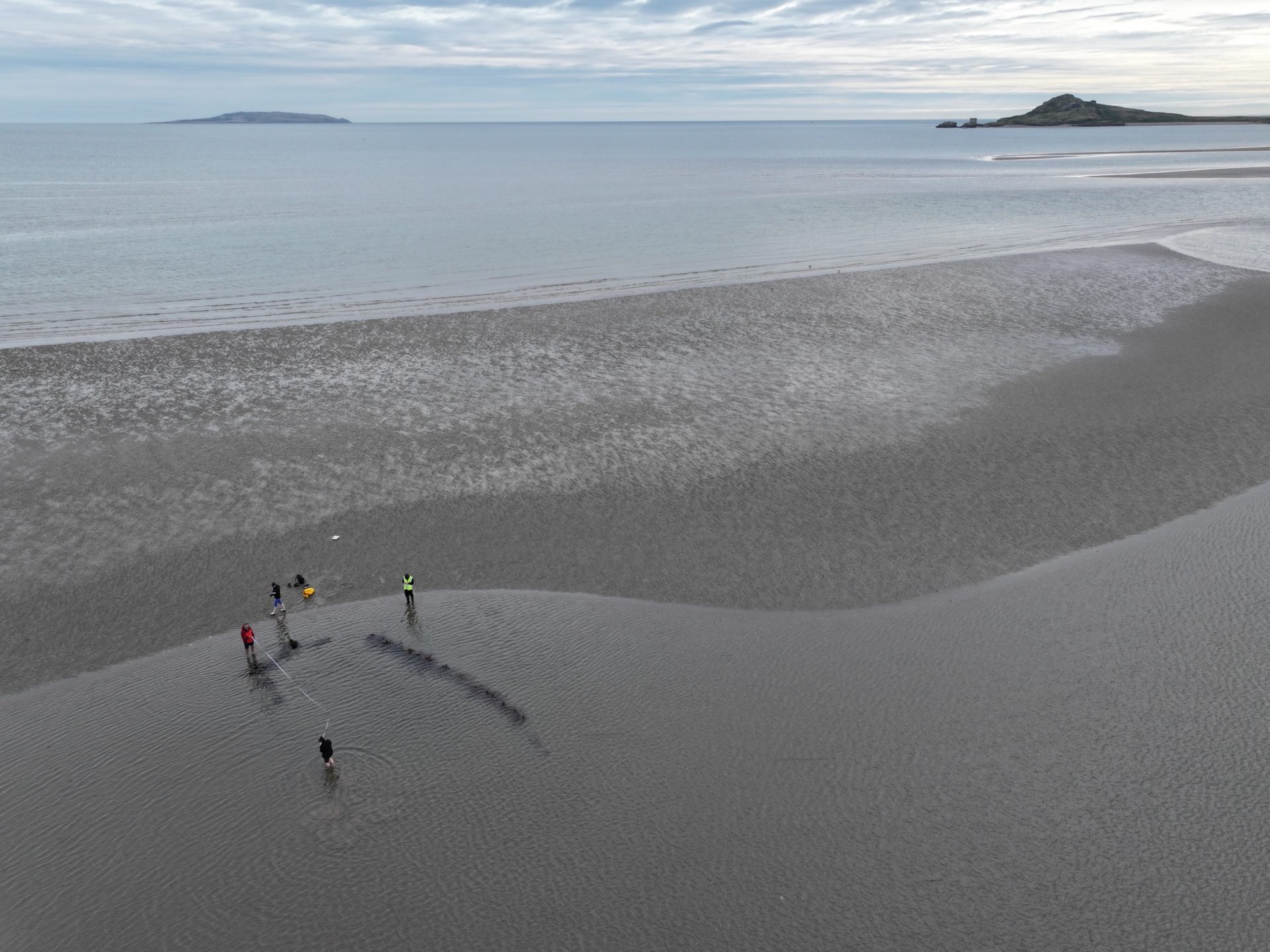 One of the shipwrecks on Dublin's Portmarnock Beach. Image: National Monuments Service
One of the shipwrecks on Dublin's Portmarnock Beach. Image: National Monuments ServiceMr Brady said wind patterns seem to be changing.
"It's looking like [the sand] is coming once more," he said.
"It usually happens on a cyclical basis that during the winter the wrecks are uncovered because there's more wind and more storms.
"Then slowly over the summer the wrecks get covered over again by the shifting sands but on this occasion it just seems to be working differently.
"Maybe it's just a change in wind patterns over the year but these wrecks have remained uncovered all throughout the summer.
"We're thinking probably in the winter months they'll cover over again".
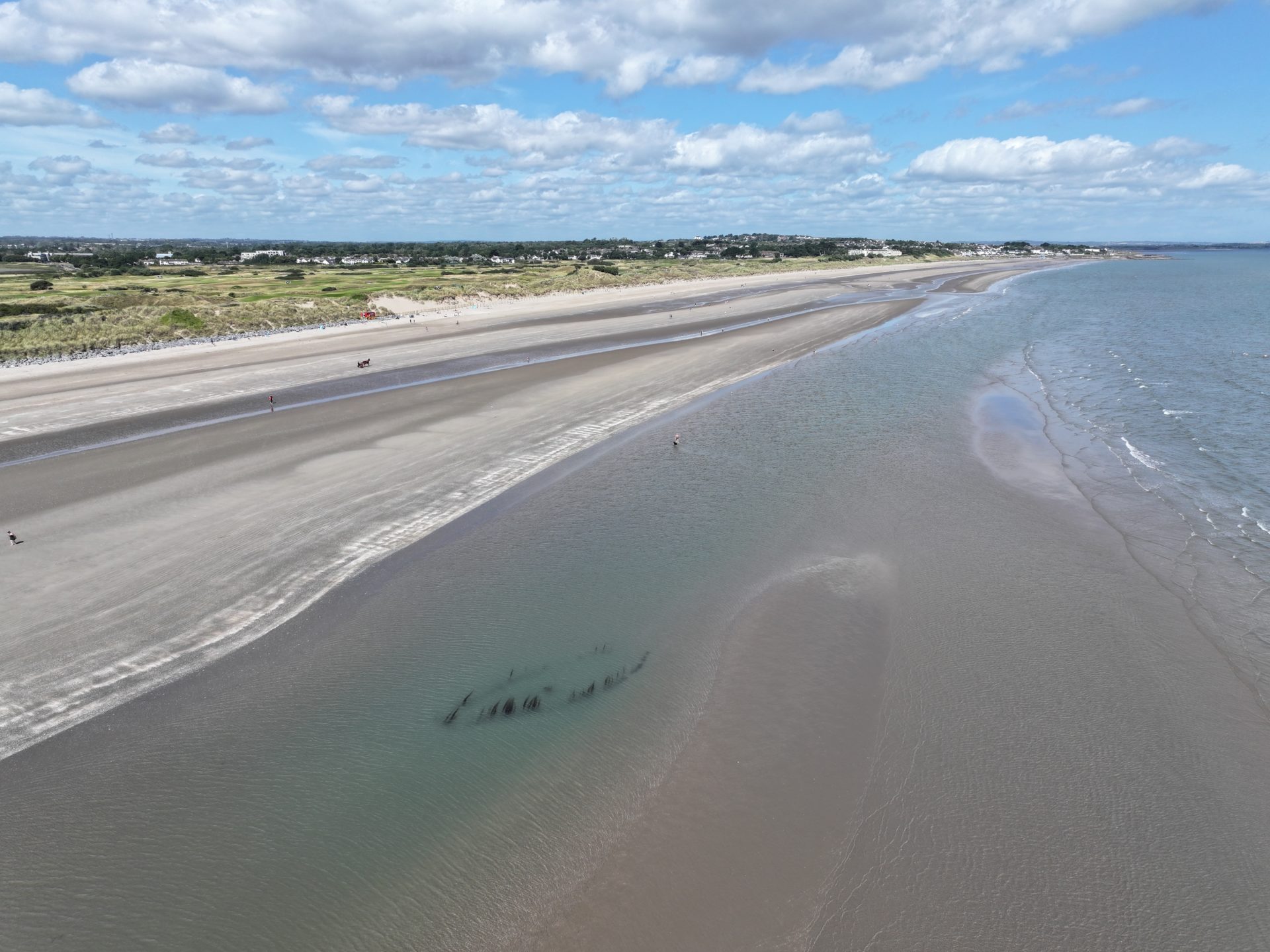 One of the shipwrecks on Dublin's Portmarnock Beach. Image: National Monuments Service
One of the shipwrecks on Dublin's Portmarnock Beach. Image: National Monuments ServiceMr Brady said they can tell more about the wrecks the more exposed they are.
"What we try and do is get the overall dimensions and extent of the wreck," he said.
"We look at it's make up and see is it just purely wood or is it wood and metal which would maybe indicate a later date?
"Then we try and identify any features on the wreck that might indicate what the vessel was - whether it was a fishing vessel, a merchant ship or maybe even a war ship."
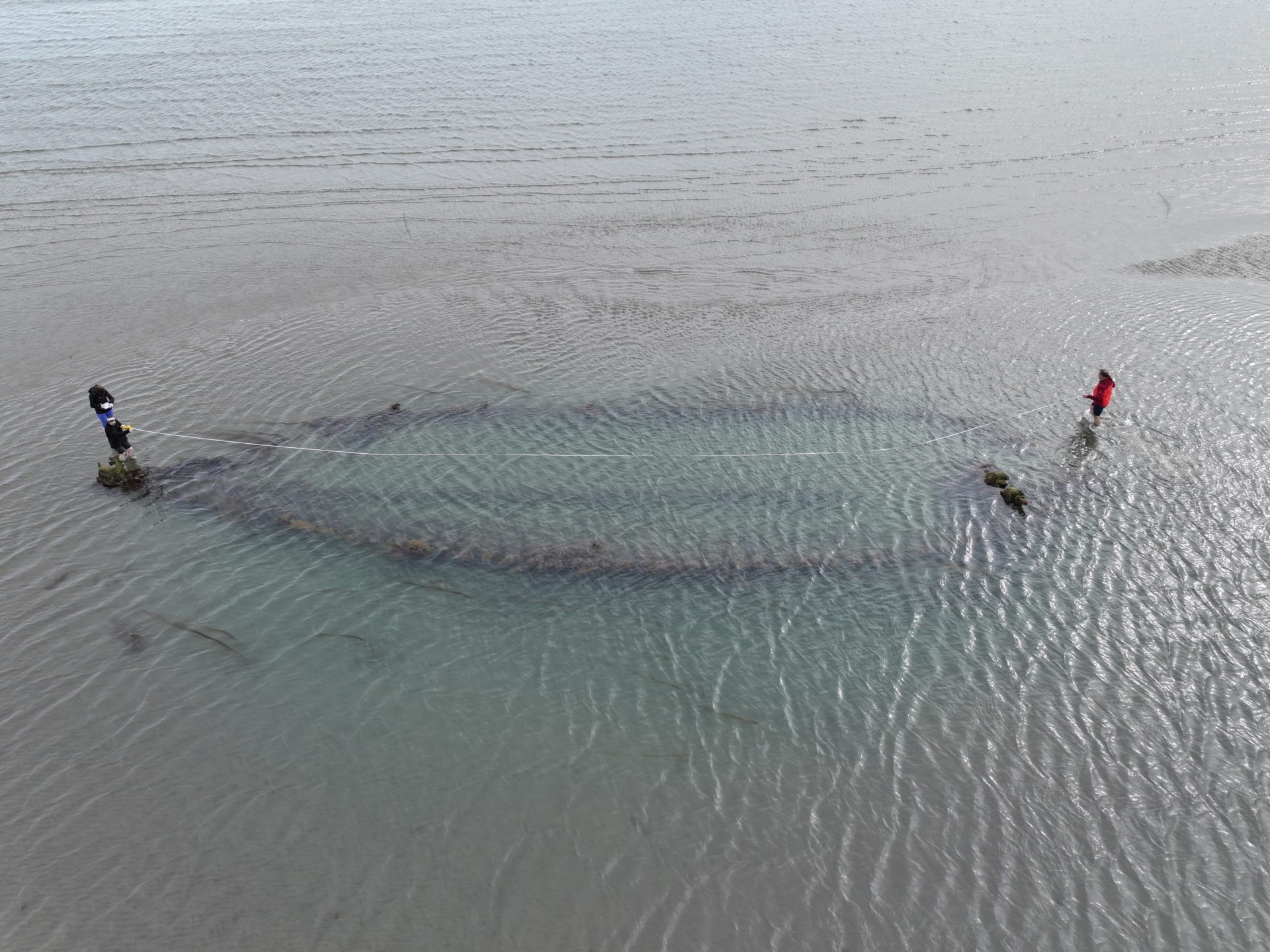 One of the shipwrecks on Dublin's Portmarnock Beach. Image: National Monuments Service
One of the shipwrecks on Dublin's Portmarnock Beach. Image: National Monuments ServiceMr Brady said they have to act quickly when the wrecks are uncovered and "carry out a lot of detective work" by matching the physical wrecks with records they have.
"We think we have identified two of the ships but it's only preliminary work at this stage," he said.
"It looks like one could be the wreck of the Malfilatre, which was a vessel originally built in 1859 in France but was operating out of Devon.
"It was heading from Cardiff to Dublin with a cargo of coal but it encountered a ferocious storm.
"When the tide dropped in the following morning [coastguard crews] were able to throw a line to the ship and the four sailors onboard were able to successfully make it ashore and lived to tell the tale".
Mr Brady added that they believe another of the wrecks could be The Gainsborough which sailed from Liverpool and sank in 1838 resulting in the death of three sailors.
Listen back here:


